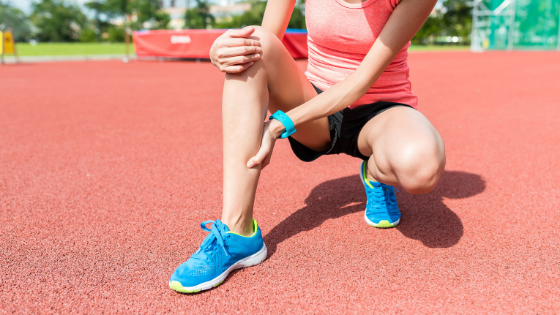
08 Dec Most Common Exercise Injuries
Injuries are never convenient, but when you’re exercising or training, they can be particularly frustrating. Educate yourself about common injuries and learn how to avoid them to save yourself from some unnecessary pain down the road.
ACL Injuries
Any activity that involves jumping or rapid changing in direction (so most sports) can cause a ligament strain or tear in your anterior cruciate ligament or ACL. The ACL is a tissue that connects your thigh and shinbone at the knee. If you are experiencing knee swelling, instability, and pain around your knee, you may have damaged your ACL. You may need to heal through physical therapy or surgery in severe cases. ACL injuries are especially common in basketball, soccer, football, and skiing.
Lower Back Strain
Back muscles can often be weakened by sitting for extended periods. When it’s time to exercise, people can often go too hard, too fast and put pressure on their back. The lower back, in particular, can experience a lot of strain while exercising. Working out often means flexed back muscles. Be sure to do stretches and strengthening exercises to prevent potential pain and injury.
Runner’s Knee
Though this is common running injury, it is not just for runners. Runner’s knee can happen anytime your knee is overused or injured and the cartilage under your kneecap breaks down. This cartilage acts as a natural pad to shield you from the pain of impact, but when that wears down you will experience pain when you are bending your knee, walking upstairs, squatting, kneeling, and of course, running. It is usually treated with rest, ice, and stretching exercises. It can be prevented by building up your hip muscles to relieve some of the strain that is put on your knees during exercising. Changing out your shoes for more supportive shoes may also help you prevent injury.
Pulled Hamstring
The hamstring muscle group is at the back of the thigh. A pulled hamstring usually means anything that puts a strain on these muscles. This is very common in activities that include running, sprinting, or other sudden movements. If you have pulled your hamstring, you may experience swelling, bruising, and weakness around your thigh. Treatment will vary based on the severity of the injury. In most cases, the well-known RICE method will work. RICE stands for rest, ice, compression, and elevation. This combination is a good idea for most exercise-related injuries. In serious cases, surgery may be required.
Achilles Tendinitis
Achilles tendinitis is a strain on your Achilles tendon—the band of tissues that connects calf muscles to the heel bone. This injury is usually a result of overuse or overextension and is very common in athletes. If you are experiencing pain and swelling in your ankle area, you may have Achilles tendinitis. Like other sports injuries, the RICE method is good practice. You can prevent this pain by increasing your exercise slowly and not jumping too far ahead too fast. Your shoes can impact the strain put on your ankles, be sure to choose shoes with proper support. Strengthening your calf muscles will also help to relieve some of the pressure put on this tendon.


Sorry, the comment form is closed at this time.